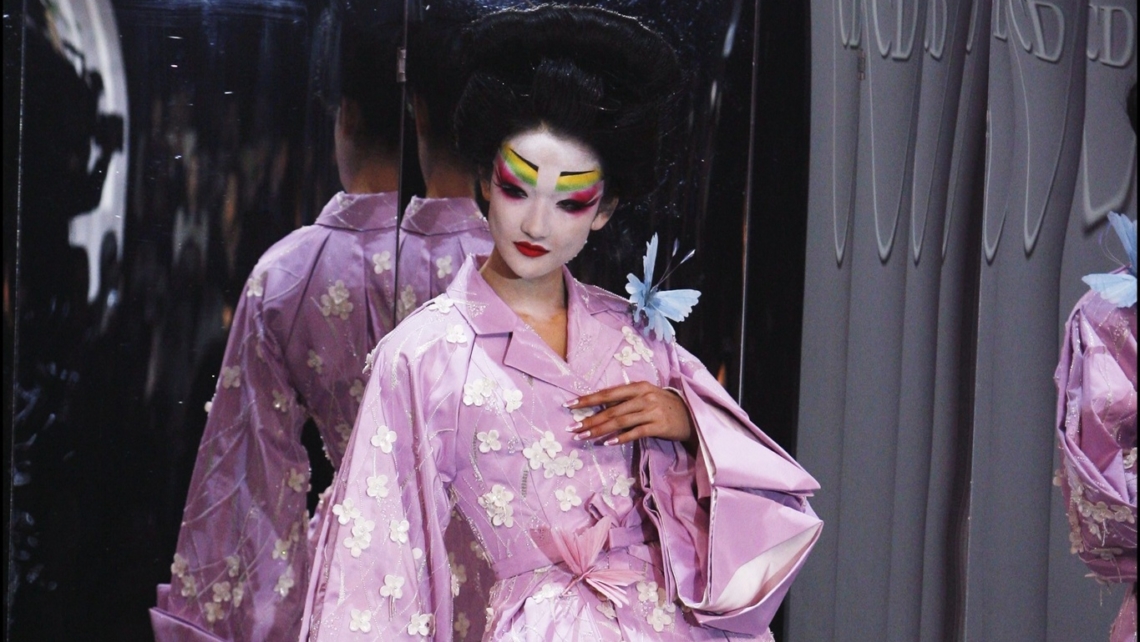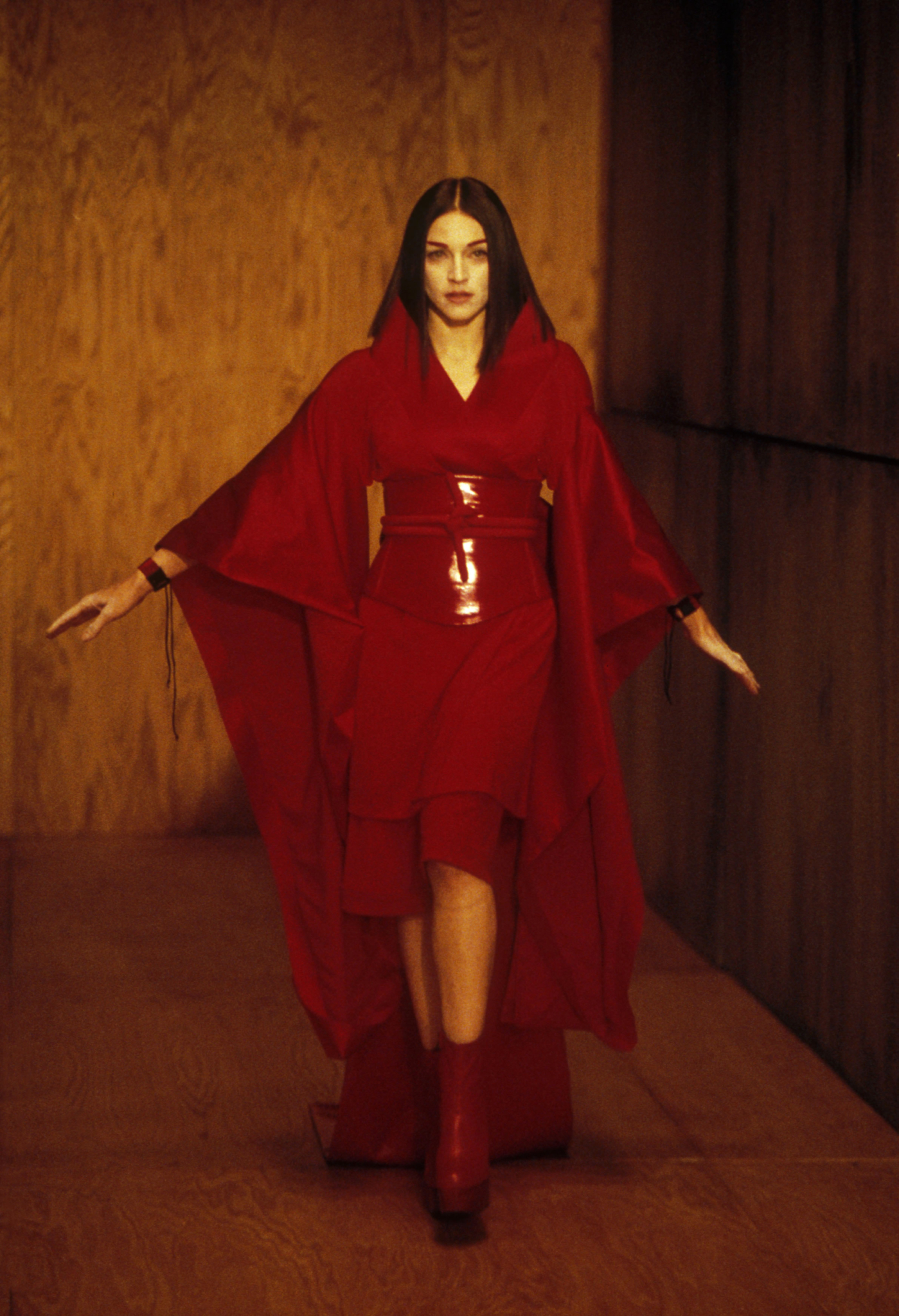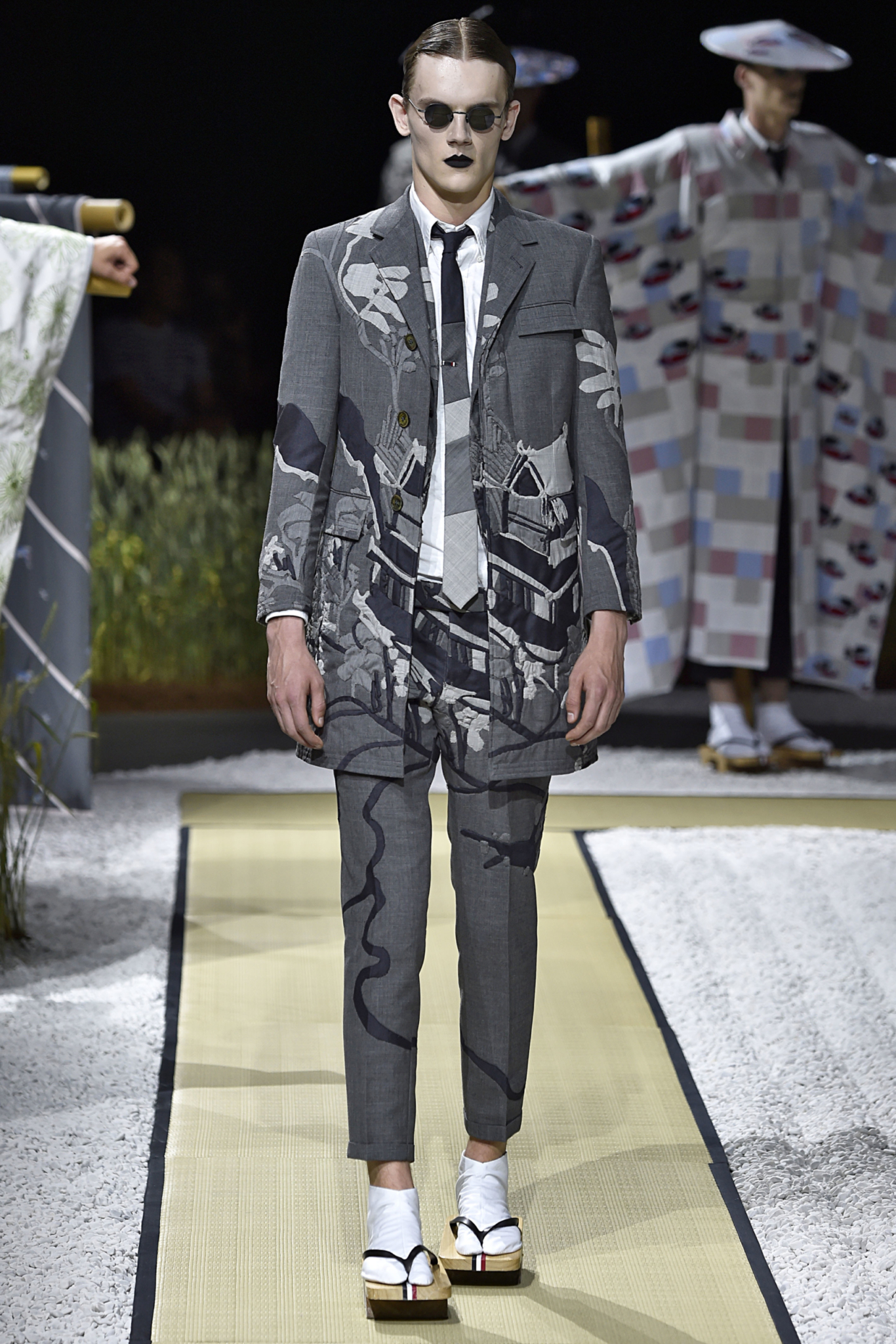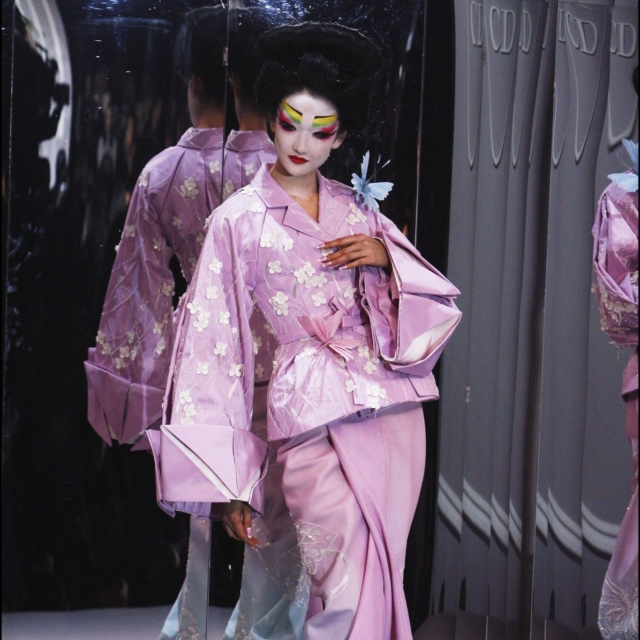Ask anyone where the concept of fashion was invented, and it’s likely they’ll answer Paris or Europe, referencing haute couture and (if they’re real experts) Charles Frederick Worth. For decades, this view was accepted, even by the most well-read of scholars. A new generation of academics are working to counter this myth as evidence emerges that Indian, Chinese and Japanese cultures shared similar fashion systems to those found in Europe.
With this in mind, curators at London’s V&A museum felt it was time fashion systems from other parts of the world were represented in the West. The V&A’s Kimono: Kyoto to Catwalk is one answer to this. Anna Jackson, the curator of the exhibition, produced it as a way of celebrating traditional Japanese kimono, while dismantling perceptions that they’re merely a ceremonial, or ritualistic, costume. “It is about showing that there was a really developed fashion culture in Japan as far back as the 17thcentury. The kimono has always been an incredibly fashionable garment,” explains Jackson, sitting opposite me in the ornate V&A café one wet winter morning.
The curator is troubled by the lack of representation of non-Western fashion in exhibitions and educational environments. Exploring her reasoning behind this project, she repeatedly highlights how, “Most exhibitions focus on Western fashion and designers, so we wanted a show that proved fashion flourished elsewhere, to contradict the perception that fashion is a European invention.”
“We also wanted to show that kimono had a massive influence on dress styles outside of Japan,” offers Jackson. “There was a tradition in Europe of wearing loose gowns but suddenly [after the Dutch brought back kimono from Japan in the 1660s] there were these incredibly beautiful, colourful silk garments arriving which took everything by storm.”








